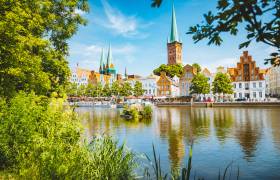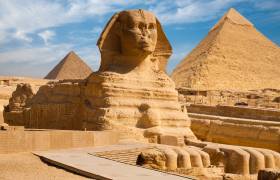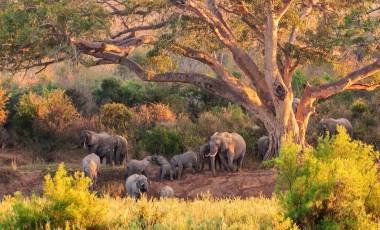
Ancient Egypt and the Nile River Cruise
Per person, double occupancy, excludes roundtrip airfare
Take an Egypt tour and Nile River cruise to discover the beauty and wonders of the ancient world. See the most recognizable monuments in the world, from pyramids to towering temples and opulent tombs.
Request A Quote
Per person, double occupancy, excludes roundtrip airfare. Passport required.
See Dates & Prices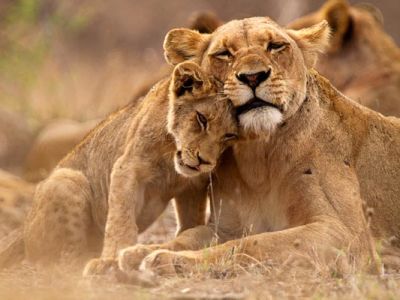
 South African animals are some of the most iconic wildlife in the world. It’s home to nearly 300 mammal species, 450 reptile and amphibian species, and almost 850 different kinds of birds. This southernmost nation in Africa is a dream destination for animal lovers.
South African animals are some of the most iconic wildlife in the world. It’s home to nearly 300 mammal species, 450 reptile and amphibian species, and almost 850 different kinds of birds. This southernmost nation in Africa is a dream destination for animal lovers.  African lions comfortably sit at the very top of the food chain. These apex predators often live in prides of 15-30 individuals. Two to four adult males join numerous lionesses and young cubs in a highly social extended family. Lions also live in groups of just males or females, or as solo nomads.
African lions comfortably sit at the very top of the food chain. These apex predators often live in prides of 15-30 individuals. Two to four adult males join numerous lionesses and young cubs in a highly social extended family. Lions also live in groups of just males or females, or as solo nomads.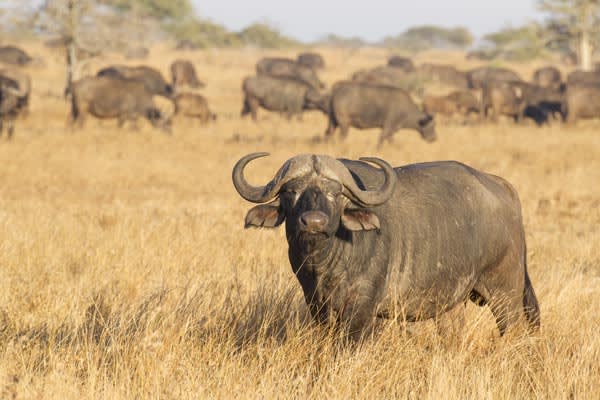 Cape Buffalo, or African Buffalo, are massive, famously ill-tempered members of the bovine family. This distant relative of the domestic cattle is known as one of the most dangerous animals in Africa. They are aggressive and fearless when their herd is threatened and can charge at up to 35 miles per hour.
Cape Buffalo, or African Buffalo, are massive, famously ill-tempered members of the bovine family. This distant relative of the domestic cattle is known as one of the most dangerous animals in Africa. They are aggressive and fearless when their herd is threatened and can charge at up to 35 miles per hour. The mud-loving, near sighted, double-horned rhinoceros is one of Africa’s most fascinating animals. The two African subspecies, white rhinos and black rhinos are both grey. Black rhinos weigh between 2,000-3,000 pounds, and white rhinos vary between 3,000-7,000 pounds.
The mud-loving, near sighted, double-horned rhinoceros is one of Africa’s most fascinating animals. The two African subspecies, white rhinos and black rhinos are both grey. Black rhinos weigh between 2,000-3,000 pounds, and white rhinos vary between 3,000-7,000 pounds. African leopards are strong, athletic, and intelligent. They are perfectly adapted to survive and thrive in the unforgiving world of the South African savanna.
African leopards are strong, athletic, and intelligent. They are perfectly adapted to survive and thrive in the unforgiving world of the South African savanna. The biggest land animal in the world, elephants are the genius gentle giants of South Africa. Males stand between 10-11 feet tall and can weigh more than 15,000 pounds.
The biggest land animal in the world, elephants are the genius gentle giants of South Africa. Males stand between 10-11 feet tall and can weigh more than 15,000 pounds. Cheetahs are the fastest animal in the world. They can run at 60 miles an hour, making the sleek and slender cat one of the most formidable hunters in Africa. Their tall legs, deep chest, and long tail help are perfectly adapted for extraordinary speed and agility. These big cats can reach a full sprint in fewer than three seconds, and turn and stop just as quickly.
Cheetahs are the fastest animal in the world. They can run at 60 miles an hour, making the sleek and slender cat one of the most formidable hunters in Africa. Their tall legs, deep chest, and long tail help are perfectly adapted for extraordinary speed and agility. These big cats can reach a full sprint in fewer than three seconds, and turn and stop just as quickly. Hippos are big, bad, semiaquatic herbivores that range in size from 2,800 to 3,300 pounds. They spend most of their lives in and around the water, typically only leaving at sunset to graze for hours on up to 150 pounds of grass at a time.
Hippos are big, bad, semiaquatic herbivores that range in size from 2,800 to 3,300 pounds. They spend most of their lives in and around the water, typically only leaving at sunset to graze for hours on up to 150 pounds of grass at a time. African Penguins, also known as Cape Penguins, are delightful little birds that live in colonies along the rugged South African coast. They are around two feet tall and weigh just about 9 pounds.
African Penguins, also known as Cape Penguins, are delightful little birds that live in colonies along the rugged South African coast. They are around two feet tall and weigh just about 9 pounds.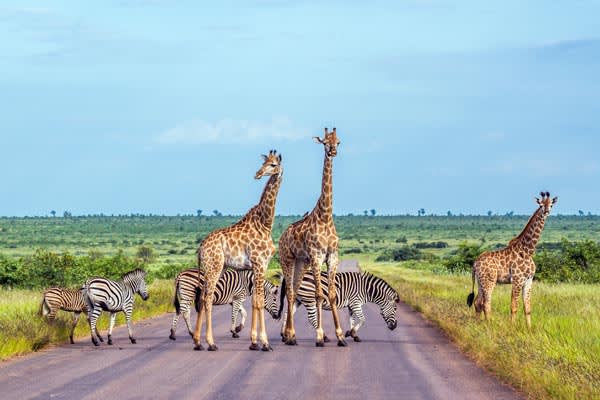 Towering at a height of 14-19 feet, giraffes are the tallest mammals in the world. Perched on 6-foot-long legs, they stride through the savanna in search of treetops rich with luscious leaves. They eat hundreds of pounds of greenery each week, which is also their main source of water.
Towering at a height of 14-19 feet, giraffes are the tallest mammals in the world. Perched on 6-foot-long legs, they stride through the savanna in search of treetops rich with luscious leaves. They eat hundreds of pounds of greenery each week, which is also their main source of water. Kruger is the best place in the world to go on an
Kruger is the best place in the world to go on an  Table Mountain is recognized by UNESCO for having some of the highest plant biodiversity in the world, but it also offers incredible wildlife viewing. The easily accessible Boulders Beach is home to a colony of over 3,000 African penguins. In addition, the charming dassie is found throughout the park.
Table Mountain is recognized by UNESCO for having some of the highest plant biodiversity in the world, but it also offers incredible wildlife viewing. The easily accessible Boulders Beach is home to a colony of over 3,000 African penguins. In addition, the charming dassie is found throughout the park.
